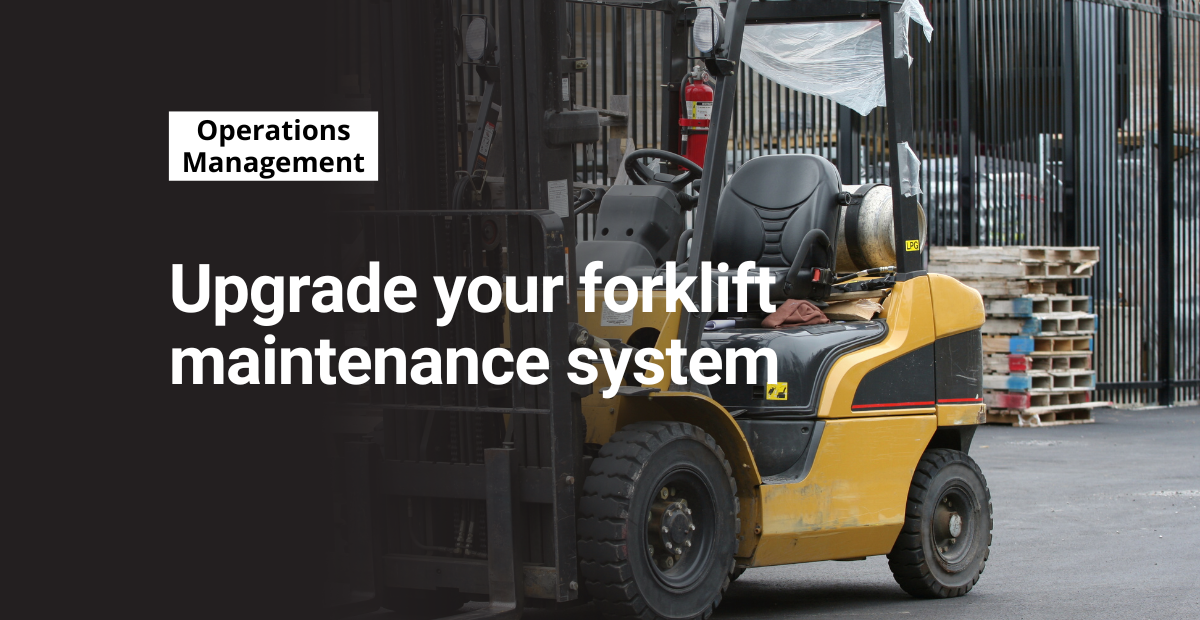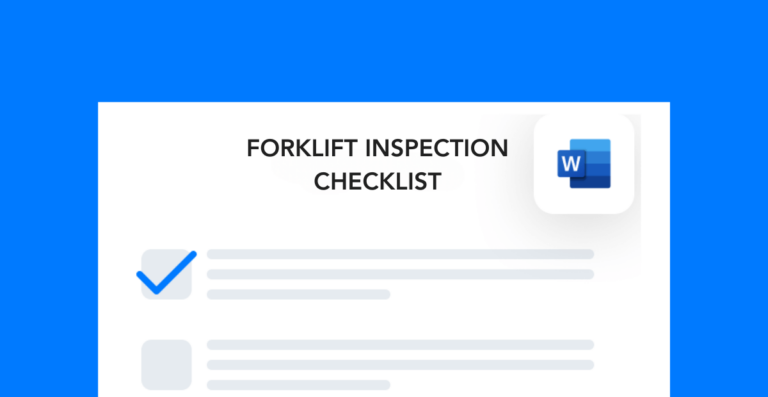In 2017, there were 9,050 nonfatal injuries and 74 fatalities from forklift-related incidents. Many of those incidents come with equipment damage, not to mention lost time for investigation, follow up, retraining, and other action items. Regular care and attention for forklift maintenance play a crucial role in preventing such incidents.
You may already have robust safety programs in place to prevent these types of events, especially when it comes to forklift maintenance and inspection.
But when was the last time you revisited your approach? Whether you’ve had the same system for 3 months or 3 years, check out these recommendations for upgrading your forklift upkeep and maintenance system.
Organizing forklift equipment
One simple but very effective way to protect forklifts from damage is to better organize them. Regular organization is a crucial part of the maintenance of forklifts, ensuring they are stored when used, repaired, or discontinued.
You may need to reorganize if you frequently struggle to:
- Track red-tagged equipment
- Take inventory of your forklifts
- Have near misses in parking areas
- Locate forklifts that need regular maintenance
- Keep track of which equipment has been checked
If you don’t already have a way to identify each forklift, start by creating an equipment inventory. It should include an ID number and a name/description for each forklift. This will make it easier to track where everything is—even if it’s not right in front of you.
Also look at how you physically park and store forklifts. Having a process for properly storing equipment can help protect against exterior damage. A good storage process is part of the ongoing maintenance of forklifts and also may prevent accidents in high-traffic areas (like parking lots), which means less forklift repairs for your team to do.
Evaluating operators’ forklift maintenance habits
Oftentimes, people look to training programs to improve the other areas of their business. And there’s a reason: having well-informed workers is the key to operational success. So, if you want to improve the condition of your forklift equipment, you need to teach workers about maintaining forklifts properly.
Start by evaluating the current maintenance habits your operators have. For example, do they remove trash from the equipment? Do they follow the correct steps for starting up and turning off the forklifts?
Chances are, if you take the time to observe your workers, you’re going to find some areas for improvement.
Then, cross-reference your findings with the current training materials on forklift maintenance processes. See if something in those materials needs an update to enhance understanding of proper maintenance behaviors.
The last thing you should do is update your training materials or come up with a program to audit and correct bad habits in real time. Follow up with those decisions to ensure they integrate well with your existing forklift maintenance strategies.
Documenting maintenance and inspections
Simplicity is key when it comes to documentation of all maintenance activities. The more complicated your approach, the less likely you are to use it. And having a poor recordkeeping system can cause many problems, such as:
- Losing track of maintenance progress
- Forgetting to make critical repairs
- Making communication between technicians more difficult
- Creating gaps for the incident investigation process
- Slowing down the time it takes to fully repair equipment
If you only have a few pieces of forklift equipment in your facility, you may not need a robust documentation system. A simple spreadsheet with a central storage location (so all technicians have access) might be the most effective way to document all your maintenance and inspection activities.
Here’s a simple checklist that you can use for your future inspections:
Free checklist!
Make sure your forklifts are safe for use by implementing this safety checklist before use. This can significantly improve your regular forklift maintenance routine.
If you have a fleet of forklift equipment, however, a digital recordkeeping system is going to be the best long-term solution. EHS software, like the Frontline action tracking system, is a necessity for businesses across all industries.
Centralized storage for important maintenance records not only makes it easier for a team to coordinate action items. But it also helps for unexpected events like regulatory inspections or incident investigations.
Regardless of how you track your documents, it’s essential that the system is easy for technicians to follow and easy for site leaders to monitor. Simple processes eliminate variables for workers to consider, ultimately making their jobs easier to perform. In the end, regularly revisiting your maintenance approach is a great way to reduce costs and prevent incidents at the same time as ensuring efficient forklift maintenance practices.




